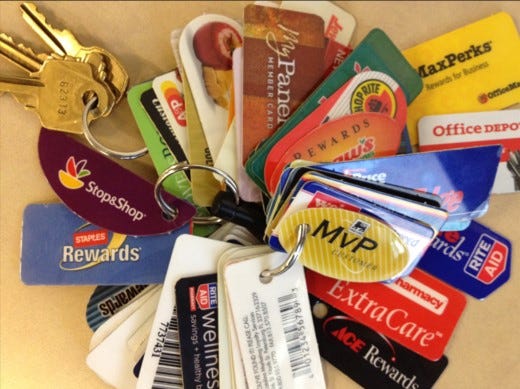Things I'd Like to See Change with Retail
Part One: A History
This is the first part of a two part series. This content is usually reserved for premium subscribers but for this series I have decided to make it free.
As someone who works with retailers, I get to experience the industry revolutionize itself in real time, often through the eyes of a technology vendor who is providing solutions that enable some of those industry breakthroughs. Digitization projects are often driven by what’s possible (meaning given the current technology landscape), affordable, and will provide the best ROI. As a consumer, I frequently get to reap the benefits of services like buy online, pick up in store, or same-day delivery, and I often expect these perks to be table stakes. As a consumer I am guided by the “should” and “wouldn’t it be nice”, which is typically guided by unrealistic expectations and inconveniences in my day-to-day. Retail is a unique industry, it’s one of the few that offer the chance for people working in the industry to experience it first-hand and use those experiences to drive change.
First… A History Lesson
It’s been right at 10 years of the same-day delivery craze. In 2014, to compete with Amazon, Google and Barnes & Noble partnered to offer same-day delivery to customers in parts of New York and California. In 2015, Amazon made history by offering free same-day delivery in 14 cities across the US. According to Retail Touch Points, as of 2024, 51% of retailers are providing same-day delivery representing some of the logo’s below.
Many of these retailers also shaped the city and suburban real-estate landscape, with foot traffic bringing additional revenue to other businesses in the area. Foot traffic is often one of the most predictive markers for retail, which has significantly decreased post Covid-19, however late 2023 trends indicate foot traffic is on the rise.
Buy-online pick up in store (BOPIS) seems like it’s been a part of our lives forever. Now, many retailers off that in their big 3 of order selection - Buy online pick up in store, home delivery, or inventory “confirmed’ for in-store shopping. But this is a “new” offering and has only been around for a couple of years/. According to Harvard Business Review, In 2019, just 4% of the 500 largest retailers offered online ordering with curbside pickup. During the pandemic, over 40% of consumers tried a new shopping method, and studies indicate that shopping trends were not as much seasonal in nature, but rather a transformational change with long standing effects. Now nearly 65% of all retailers offer BOPIS, and now the BOPIS is expected to reach $700B by 2027.
Now retailers are prioritizing a mobile-first approach and developing an omni-channel retail strategy that provides a value-added and personalized shopping experience. Many retailers offer a coupon or discount code upon sign-up into their loyalty program, and often incentivize consumers based on their loyalty. Discounts and coupons aren’t a new thing, in 1887, Coca-Cola offered hand-written vouchers to the public entitling them to a free glass of Coca-Cola, then retailing at 5 cents. There was the coupon-clipping craze in the 90’s and many grocers still offer printed coupons upon receipt. Modern loyalty programs, as we think of them today, aren’t necessarily a new thing either. Betty Crocker introduced the Box Top Program in 1929, and could be used redeemed for rewards. The frequent flier program was launched by American Airlines in 1981. Card-based loyalty programs gained traction in the 1990’s as well, which made capturing loyalty and customer spending habits via barcode transaction or a phone number. Who remembers these ?

Now our cell phone is the conduit for engagement with retailers. It serves as the home for the mobile app, wallet and mailbox. Upon the iPhone release in 2007, which brought the App store a year later. I don’t know who was the first retailer to offer a mobile app, but I can tell you the first to do it correctly: Starbucks. They pioneered a mobile-first reward program that offered a personal touch, including things like location finding, order pick-up, and drink recommendations.
And now we have accelerated into the age of AI, where’s it’s value is only amplified by retail digitization. It’s being used to predict buyer patterns, personalize fit and function and drive in-store experiences and mobile experiences that allows customers a seamless experience regardless of shopping method.
I say all of this because I believe it is important to understand how we got to where we are. I do believe the COVID-19 pandemic, was probably the greatest influencing factor retail has ever seen. Without it, I believe many of these common-place retail offerings we see today would have still come to fruition, but frankly, it would have occurred at a snails-pace and potentially without a unified approach. There is strength in struggle, and the pandemic offered a chance for all retailers to unite towards a common goal: how do you change the ways in which you engage your customers?
But today is not the end-point and as a consumer I believe I have a right to think out loud (read gripe) about some things I would like to see change. While the retail digitization has been beneficial, it has also caused some ungodly headaches. Since the pandemic we have standardized on certain things that make no sense and sometimes I believe we get stuck in a rut of doing things the same that we never self-evaluate. Luckily I have an audience of you here to share my thoughts, but I want to use the subsequent article to inspire rather than critique.
Part two of this series will be published next week, so stay tuned. If you enjoyed this article, please feel free to like, comment or share!



